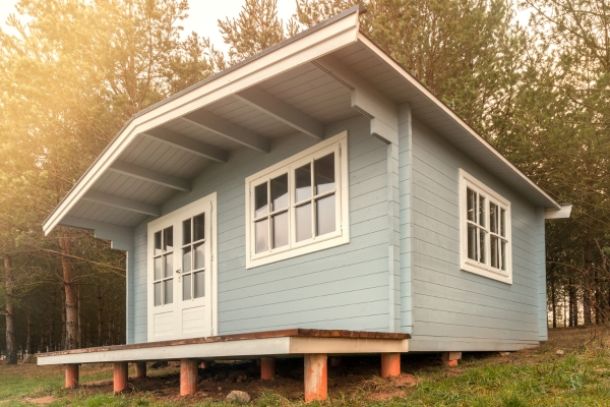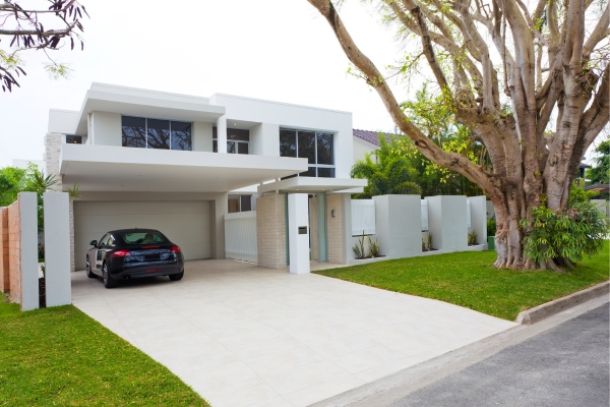Constructing a wooden home using timber as the primary building material is a timeless approach that combines tradition with modern DIY techniques. This guide will provide you with a comprehensive walkthrough on how to build on timber, covering everything from the initial design to the final finishing touches. Emphasizing both craftsmanship and practicality, the article is designed to help DIY enthusiasts navigate the nuances of timber construction.
Introduction
Timber construction is revered for its natural beauty, durability, and sustainability. When embarking on a DIY timber home project, you not only harness the warmth of wood but also tap into centuries-old construction techniques updated for modern living. This guide will help you understand the core elements of timber building, including design considerations, material selection, and essential construction steps.
Planning and Design with Timber
A well-thought-out design is the cornerstone of any successful timber construction project. Here are key planning steps:
- Conceptualization: Begin by sketching a rough layout that maximizes the use of timber’s natural strengths. Consider open floor plans that allow the wood’s grain and texture to become a focal point.
- Detailed blueprints: Develop precise blueprints that detail every aspect of the construction. Modern design software and digital tools can help ensure accuracy and provide 3D visualizations.
- Compliance and permits: Verify that your plans meet local building codes and obtain the necessary permits. Timber construction can have specific requirements, particularly regarding fire safety and structural integrity.
Choosing the Right Timber
The quality of your timber directly influences the durability and aesthetic appeal of your home:
- Species selection: Different wood species offer unique benefits. Cedar and pine are popular for their natural resistance to decay, while oak provides exceptional strength. Consider your local climate and the intended use of each wooden element.
- Sustainability: Opt for timber that is sustainably sourced. Certified wood not only ensures environmental responsibility but also often meets higher quality standards.
- Preparation and treatment: Prior to construction, treat the timber to protect it against moisture, insects, and rot. Modern treatments are available that enhance longevity without compromising the natural beauty of the wood.
Laying the Foundation and Structural Framing
A strong foundation and precise framing are critical in timber construction:
- Foundation selection: The foundation should be compatible with a timber structure. Options include concrete slabs or pier and beam systems, depending on soil conditions and climate.
- Framing techniques: Timber framing involves joining large wooden beams using traditional methods like mortise and tenon, as well as modern fasteners for added strength. Ensure that all joints are secure and that the structure is properly aligned.
- Use of modern tools: Embrace modern technology—laser levels, digital measuring tools, and computer-aided design—to enhance precision. These tools bridge the gap between traditional craftsmanship and contemporary efficiency.
Insulation, Roofing, and Energy Efficiency
To create a comfortable home, integrate energy-efficient components with your timber structure:
- Insulation: Although timber offers natural insulation properties, adding materials such as recycled cellulose or natural wool can improve energy efficiency. Ensure that insulation is properly installed in walls, floors, and roofs.
- Roof design: A pitched roof is ideal for timber homes, as it facilitates water runoff and adds to the aesthetic appeal. Choose roofing materials that complement timber, such as wooden shingles or metal panels with a natural finish.
- Windows and doors: Select energy-efficient windows and doors that match the overall design. Proper sealing and installation are essential to maintain thermal efficiency and prevent drafts.
Interior and Exterior Finishing
Finishing touches bring a timber home to life:
- Exterior treatments: Protect the timber with eco-friendly sealants, stains, or paints. These not only enhance durability but also accentuate the natural texture of the wood.
- Interior detailing: The interior should celebrate the warmth of timber. Use natural finishes, exposed beams, and custom woodwork to create a cohesive look. Consider integrating features like built-in shelving, accent walls, and ambient lighting to enhance both functionality and design.
- DIY projects: Many finishing touches can be handled as DIY projects. From crafting custom furniture to applying protective coatings, the process allows you to personalize your space while learning new skills.
Safety and Maintenance
Safety and long-term maintenance are crucial in timber construction:
- Structural inspections: Regularly inspect the structural integrity of your timber home. Look for signs of moisture damage, pest infestation, or weakening joints. Early detection can prevent costly repairs.
- Routine upkeep: Establish a maintenance schedule that includes resealing wood surfaces, cleaning gutters, and checking insulation. Proactive maintenance ensures that your timber home remains both beautiful and structurally sound for years.
- Community resources: Leverage local DIY communities or workshops focused on timber construction. Sharing knowledge and experiences can provide valuable insights and support throughout your project.
Conclusion
Building on timber is an art that blends tradition with modern DIY methods. By carefully planning your design, selecting quality timber, and employing precise construction techniques, you can create a home that embodies both natural beauty and structural integrity. This guide aims to empower you to take on the challenges of timber construction confidently, resulting in a uniquely personal home that stands the test of time. Embrace the process, continuously learn from each step, and enjoy the satisfaction of constructing a home with your own hands.


